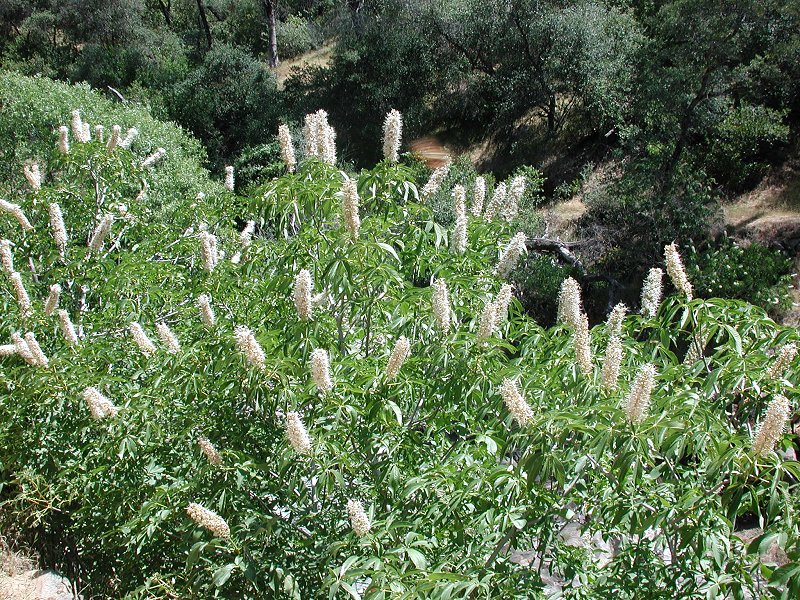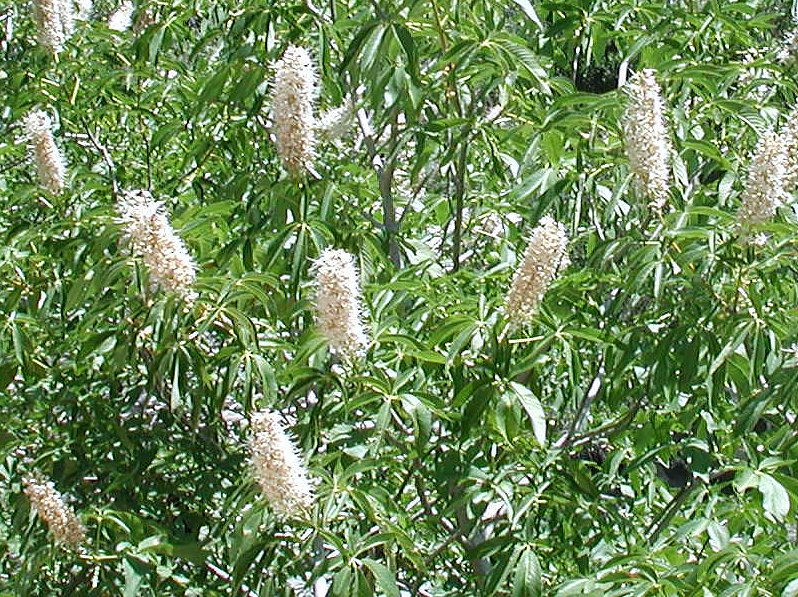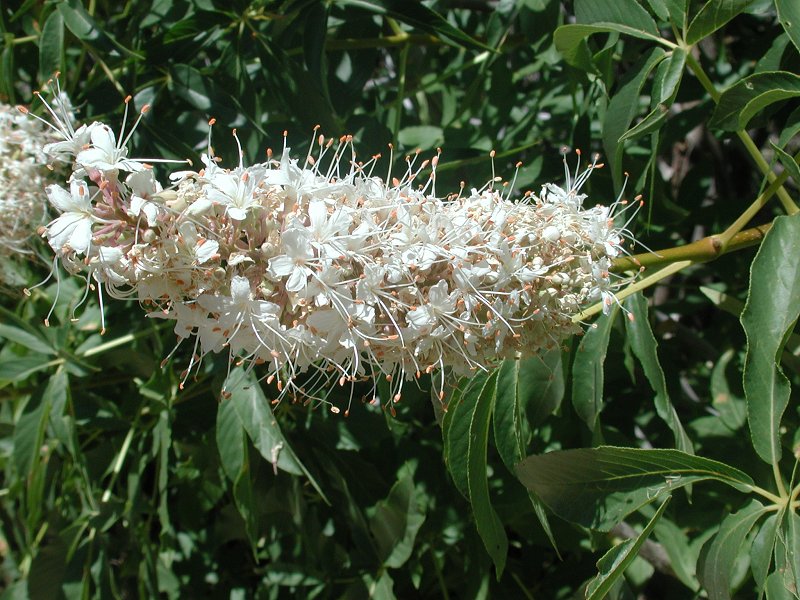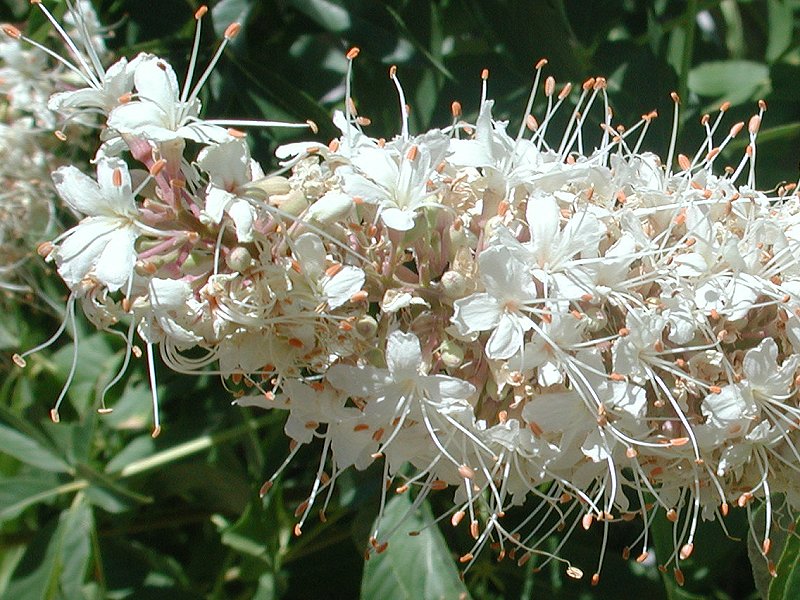Late Bloomer. Broad tree with large, tall,
pinkish white,
fragrant flower spikes and chestnut-like seeds. Attracts
butterflies.
Notes: Buckeye (Horse-chestnut) family. One of our loveliest natives.
About mid-April the tree is covered with huge spires of flowers
which are attractive to butterflies but poisonous to bees.
At peak blooming period, it is a delight to see these
umbrella-shaped trees and their flower spikes covered with butterflies.
Poisonous
to bees is an interesting plant strategy. Why would a species
be poisonous to a potential pollinator?
One can understand that many plants are designed for certain
pollinators (e.g., Soap Plant for the Moth), but why would a plant be poisonous?
Also, only one flower of the hundreds on a stalk (see photographs below) becomes pollinated
because of a chemical
reaction which occurs after the pollinator visits—again an interesting
strategy. Oh well, in humans only one sperm among millions typically fertilizes an
egg.
The name comes from the seed balls, which have a white
circular area on the surface that reminded some of a “buck’s eye.” The
Osage Native Americans used the seeds to stun fish,
by crushing and tossing the seeds into the water.
When
used for food, they leached the nuts longer than they did acorns.
The
nuts were broken open, soaked for a day, and then pounded into meal which was leached.
It took all day to leach and dry, leach and dry ... at least 10
times. At the start of each leach/dry cycle, they laid a stick on the
ground to keep count. Then
the meal was cooked into mush and eaten right away.
Another method was to bury the nuts in cold, swampy ground all
winter, and then boil them in the spring.
A tea was made from the leaf and used as a remedy for varicose
veins and lung congestion. The
buckeye was prized by Native Americans and settlers alike.
Some settlers believed that putting a buckeye nut in the pocket
would ward off rheumatism and
hemorrhoids, while losing it would bring bad luck.
Click on species name below to go to USDA for this species.
Kingdom Plantae -- Plants
Subkingdom Tracheobionta -- Vascular plants
Superdivision Spermatophyta -- Seed plants
Division Magnoliophyta -- Flowering plants
Class Magnoliopsida -- Dicotyledons
Subclass Rosidae
Order Sapindales
Family Hippocastanaceae -- Horse-chestnut family
Genus Aesculus L. -- buckeye P
Species Aesculus
californica (Spach) Nutt.
-- California buckeye
|



